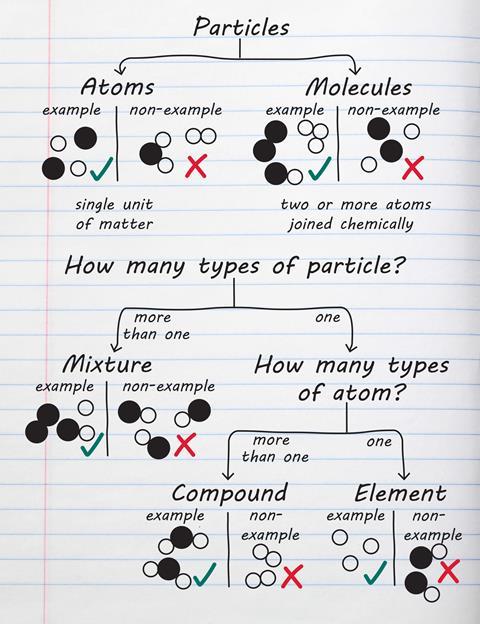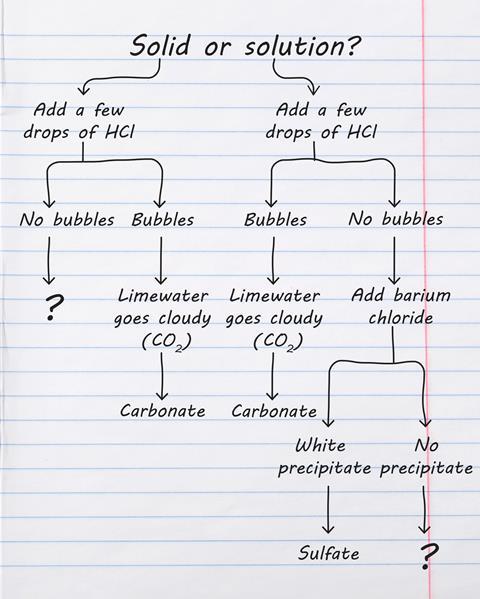Plant the seeds of recall and reduce cognitive load with this essential learning aid
A decision tree, or question tree, is essentially a sequence of questions or choices learners can use to solve complex problems. It is a visual representation of the schema an expert would use to find the correct answer to a question. As experts, teachers instinctively use decision trees to find the correct answer to a question; for learners, they’re best written or drawn.
In the classroom, decision trees can help with knowledge recall, which primes students for new learning and helps them metacognitively model how to approach complex problems. They can use this as a basis for rigorous questioning to check understanding and rehearse new learning ahead of completing tasks.
In the classroom, decision trees can help with knowledge recall, which primes students for new learning and helps them metacognitively model how to approach complex problems. They can use this as a basis for rigorous questioning to check understanding and rehearse new learning ahead of completing tasks.

Fill knowledge gaps
This image shows a tree I grew with a year 10 class recently. After 18 months of Covid-interrupted learning, several pupils had knowledge gaps which would have prevented them from securely accessing the novel content.
The main issues they had were differentiating between particle diagrams of mixtures and compounds, as well as using the key terms molecule, atom and particle correctly.
For the first tree, I began by explaining that particles can be classed as either atoms or molecules. I then drew examples of atoms and asked the class to show me some non-examples on whiteboards.
We repeated this for molecules. I then asked pupils to copy it into their books quickly. Pupils could understand the terms more easily than a written description due to the hierarchy communicated by the non-linguistic representation. They were also able to use the information to suggest accurate definitions.
Improve student buy-in
We then moved on to the main goal: identifying and describing elements, compounds and mixtures. During this phase, I was able to let students take more of a leading role in creating the tree, asking for choral responses to questions, like: ‘Answer after 3, the first arrow has “more than one” written on it, so what will the other arrow have? 1, 2, 3 …’. I also asked them to generate examples and non-examples on whiteboards for me to use.
This had a twofold effect: it improved pupil motivation and buy-in, and allowed me to check understanding and teach responsively, ironing out any misconceptions as pupils rehearsed the knowledge.
By the time we had completed the tree, pupils could use it to write accurate definitions for element, compound and mixture. They could also identify substance types from particle diagrams, even when they couldn’t see the tree (because I made them close their books). I even threw in a mixture of O2 and O3 to try to trick them into saying element, but the majority saw through this feeble ploy!
This same approach could be used when teaching KS3 classes without much variance, but students may have less prior knowledge.

Practical trees
I also use decision trees to support practical work. This tree provided students with a framework and method for identifying anions. By demonstrating the practical under the visualiser and building up the tree, I used a highly metacognitive approach to model how to identify the anion in a solid or solution.
Again, the decision tree displays the expert schema showing students how to think their way through a problem. I checked prior knowledge on gas tests by asking pupils to prove that carbon dioxide was being generated. I then gave students four mystery substances with the goal of identifying the anion.
Students used the tree to complete the practical and write up their conclusions with far less cognitive load than a written, step-by-step method, due to the brain’s ability to process the visual information simultaneously, rather than sequentially, as phonological information.
To tree or not to tree?
While decision/question trees are fantastic for modelling schema, metacognition, managing cognitive load, rehearsing knowledge and checking understanding, they should be used judiciously. I certainly wouldn’t create one for teaching electronic structure or relative formula mass as it wouldn’t be the best or most efficient way to model and represent those concepts. My classes have used them effectively for identifying types of bonding, based on formulae or physical properties, and for several concepts in biology (classification being an obvious one) and physics (effects of forces).
Ian Taylor










2 readers' comments